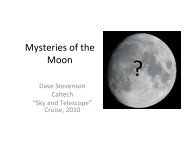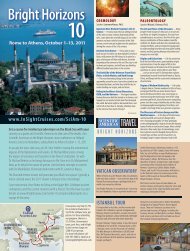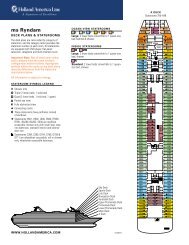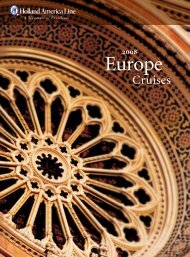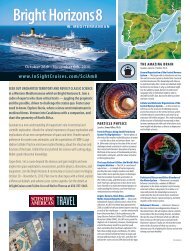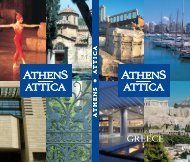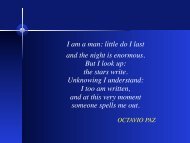Croatian cultural heritage - Business - Hrvatska turistiÄka zajednica
Croatian cultural heritage - Business - Hrvatska turistiÄka zajednica
Croatian cultural heritage - Business - Hrvatska turistiÄka zajednica
Create successful ePaper yourself
Turn your PDF publications into a flip-book with our unique Google optimized e-Paper software.
58<br />
"Juraj Plančić" paintings, named after the famous <strong>Croatian</strong><br />
painter, originally from the Old Town (62, 71 & 83).<br />
The Old Town also attracts visitors with its primordial atmosphere<br />
of the Mediterranean coast (69) and streets (79).<br />
The most valuable part of the <strong>cultural</strong> <strong>heritage</strong> of the Old<br />
Town is Tvrdalj, a fortified Renaissance castle from the middle<br />
of the 16th century, which was built and occupied by the<br />
great <strong>Croatian</strong> poet Petar Hektorović (72).<br />
Other parts of the island also stand out with their picturesque<br />
scenery, which includes lavender fields, dry-stone<br />
walls and numerous old churches and chapels (64). Jelsa is<br />
emphasised by the Renaissance and Baroque square of Saint<br />
John (68), Vrboska is known for its unique church-fortress<br />
of St. Mary of Mercy from the 16th century (73), while from<br />
the villages with preserved traditional stone architecture,<br />
the village Velo Grablje (59) is particularly interesting.<br />
The largest and the highest is the Dalmatian island of BRAČ,<br />
which does not have so many ancient monuments as Hvar<br />
but attracts the attention of visitors with its magnificent<br />
views, beautiful Mediterranean landscapes with characteristic<br />
dry stone walls (82), the most beautiful beaches and its<br />
white stone houses. It is from the antique quarries in Brač<br />
that the stone used to build a large number of palaces in<br />
Dalmatia and Venice and part of the White House in Washington<br />
was sourced. The inhabitants of Brač are also known<br />
by their peculiar character; they create monuments in honour<br />
of all the people who have marked them in a special<br />
way. Thus, in Selce, there are monuments of Pope John Paul<br />
II., the German politician Hans-Dietrich Genscher and the<br />
Russian writer Leo Tolstoy (80).<br />
The most important <strong>cultural</strong> monument of the island of<br />
Brač is the Monastery Blaca, which was built deep in the<br />
mountains in the 15th century by <strong>Croatian</strong> Glagolitic monks<br />
(74). In the mystical contemplative atmosphere of the monastery<br />
is an old observatory and a museum collection (76).<br />
The island's main <strong>heritage</strong> museum is situated in the hilly<br />
part of the island in the old tower (81), in the picturesque<br />
village of Škrip (77). Visitors are attracted to the island of<br />
Brač by magnificent church bell towers made of the white<br />
stone from the island. The most interesting among them is<br />
the bell tower in the village of Ložišća from the 19th century,<br />
the work of the <strong>Croatian</strong> sculptor Ivan Rendić (75). An<br />
attractive museum of the Petrinović family is also made out<br />
of the white stone and is located in Supetar(78), the biggest<br />
settlement in Brač.<br />
The outermost and the largest island of middle Dalmatia is<br />
the island of VIS. On the open sea, it is known for its valuable<br />
Hellenistic sites but also for the true Mediterranean at-<br />
104



